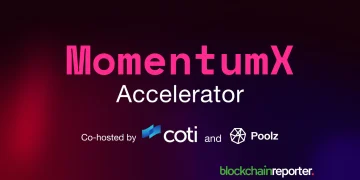Decred’s innovative approach combines Proof of Work (PoW) and Proof of Stake (PoS) to pioneer a hybrid consensus mechanism. This synergy offers heightened security and promotes a more decentralized blockchain. The computational trading AI has revolutionized the way financial markets operate by leveraging advanced algorithms and data analysis.
How PoW and PoS Complement Each Other in Decred
In the constantly evolving world of cryptocurrencies, Decred stands out with its innovative hybrid consensus mechanism that skillfully merges Proof of Work (PoW) and Proof of Stake (PoS). This combination is not a mere juxtaposition of two popular mechanisms, but a thoughtful intertwining that taps into the strengths of both while offsetting their individual weaknesses.
Proof of Work (PoW) is renowned for its unparalleled security measures. It requires participants, commonly referred to as miners, to solve complex mathematical problems to validate and add new transactions to the blockchain. This computational effort, often critiqued for its high energy consumption, has been integral in safeguarding many cryptocurrencies, including the esteemed Bitcoin, from attacks.
On the other hand, Proof of Stake (PoS) proposes a more energy-efficient methodology where validators are chosen based on the number of coins they hold and are willing to “stake” or lock up as collateral. This system fosters a more inclusive environment, allowing those without high computational power to participate in the blockchain’s decision-making processes.
Decred’s brilliance lies in its ability to weave these two mechanisms together. By allowing PoW miners to continue validating and adding new transactions to the blockchain, it retains the robust security framework of PoW. Simultaneously, PoS participants, or stakeholders, have the crucial role of voting on the validity of the blocks mined by the PoW miners.
Challenges and Criticisms
One major critique stems from the inherent complexities associated with managing a dual system. Combining PoW and PoS demands intricate technical orchestration to ensure seamless operation. This complexity can make it daunting for newcomers to understand and engage with the Decred ecosystem. It’s not merely about understanding one consensus mechanism, but grappling with the nuances of how both interplay, which may deter some potential users or miners.
Furthermore, while the hybrid system aims to counteract the energy-intensiveness of PoW with the energy efficiency of PoS, the fact remains that the PoW component still consumes considerable energy. Environmental concerns regarding the sustainability of such systems persist, especially in an age increasingly conscious of carbon footprints and global warming.
The integration of PoS has its own set of challenges. The staking system, which involves locking up a certain amount of currency to participate in governance, can be seen as prohibitive for those who can’t afford to stake large amounts. While PoS aims to democratize participation, in practice, it can sometimes create a system where the affluent have an outsized influence, echoing concerns of the “rich get richer” phenomenon.
Another intricacy is the potential for conflicts between miners (from the PoW side) and stakers (from the PoS side). Each group may have distinct interests and priorities, and balancing these might not always be smooth. This division could lead to disagreements and could challenge the overarching harmony of the system.
The Future of Hybrid Consensus Mechanisms
The blockchain landscape is no stranger to evolution. From the advent of Bitcoin’s Proof of Work mechanism, which laid the foundational stone for decentralized currencies, to Ethereum’s move towards Proof of Stake, the continual pursuit for scalability, security, and sustainability is evident. In this panorama, hybrid consensus mechanisms, like the one employed by Decred, emerge as a promising pathway.
Decred’s harmonious blend of Proof of Work (PoW) and Proof of Stake (PoS) offers a glimpse into what could be a new era of blockchain consensus mechanisms. As discussions around the environmental impact of PoW intensify, the cryptocurrency world is pressed to find solutions that retain the robustness of PoW while curbing its energy consumption.
The question isn’t merely about energy efficiency, though. The future of cryptocurrencies hinges on fostering decentralized ecosystems that are resistant to any singular point of control or failure. Decentralization, in its true essence, is about distributing power among a diverse set of participants. Hybrid consensus mechanisms stand out in this regard, incorporating the miners from the PoW world with the stakeholders from the PoS realm.
Yet, predicting the future adoption of hybrid mechanisms requires cautious optimism. While the technical merits are clear, the broader adoption of such systems will largely depend on their ease of use, scalability, and the ability to ensure harmonious collaboration between the different participating groups.
Conclusion
The marriage of PoW and PoS in Decred showcases the potential of combined consensus mechanisms, setting a precedent for future blockchain innovations.






















